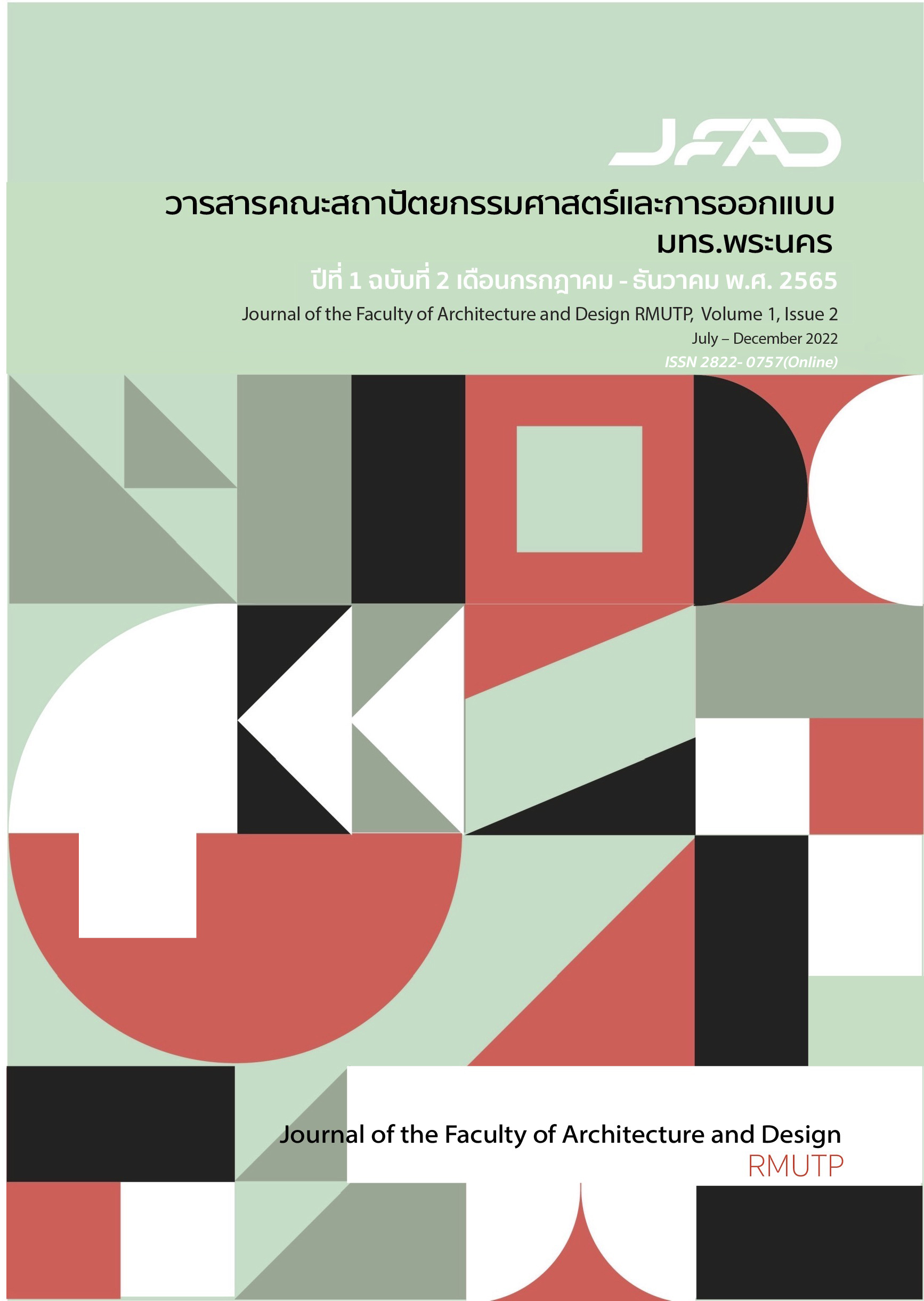Green Infrastructure for Urban Competitiveness Enhancement: Lessons Learned from Paris and Singapore
Main Article Content
Abstract
Public parks or green spaces are a fundamental necessity in urban development that directly affects the quality of life of the city's population. It directly impacts on physical and mental health. Moreover, it can be used to attract both tourists and investment. Green Infrastructure is the concept of combining urban green spaces with infrastructure development to form a network of green infrastructures, including both natural and semi-natural areas.
It helps in promoting the quality of urban ecosystems by comprising of city park, district park, community park and green way that are connected to each other as a network. This creates a competitive asset and contributes to enhancing the urban competitiveness, in terms of the quality of life of the population, dynamics of the local economy, and costs of doing business.
This is a study that combined literature review with field survey under the topic of green infrastructure development for enhancing the urban competitiveness. Two case studies included the world's major cities, i.e., Paris and Singapore. It shows that green infrastructure does not only enhance the quality of life of urban citizen, but it is also part of the infrastructure that indirectly effects the dynamics of the local economy and the cost of doing business, which promotes economic development and increases the urban competitiveness of the city.
Article Details

This work is licensed under a Creative Commons Attribution-NonCommercial-NoDerivatives 4.0 International License.
Copyright (c) 2023 : Faculty of Architecture and Design, Rajamangala University of Technology Phra Nakhon
References
Beatley, T. (2000). Green Urbanism: Learning from European Cities. Washington D.C.: Island Press.
Benedict, M. & McMahon, E. (2002). Green Infrastructure: Smart Conservation for the 21st Century. Renewable Resources Journal, 20(3), 12-17.
Charnnuwong, P. (2020). Green Infrastructure, Presentation Slide, Khon Kaen University.
Cheshmehzangi, A. &. Butters, C. (2015). Urban Green Infrastructure: for Cities of Developing Countries, Presentation Slide, The University of Nottingham Ningbo China (UNNC).
Convention and Visitors Bureau. (2015). Parks & Gardens in Paris. Available at: https://en.parisinfo.com/discovering-paris/parks-and-gardens, accessed on 1 June 2022.
Damiani, G. (2003). Bernard Tschumi. London: Thames & Hudson.
Davies, C. & Roe, M. (2015). Green Infrastructure Planning Guide, Technical Report, Newcastle University.
De Meulder, B. (2015). Theory & Practice of Urbanism since 1945. Leuven: Department of Architecture, Urbanism and Planning (ARSO), KU Leuven, Belgium.
De Meulder, B. (2016). Colonial & Post-Colonial Urbanism. Leuven: Department of Architecture, Urbanism and Planning (ARSO), KU Leuven, Belgium.
De Meulder, B. & Shannon, K. (2007). Contested Sites and Strategic Urban Projects. Topos: European Landscape Magazine, 61, 42–61.
Dümpelmann, S. (2019). Seeing Trees: A History of Street Trees in New York City and Berlin. New Haven, CT: Yale University Press.
Goh, C. (1999). National Day Speech: First-World Economy, First-Class Home on August 9.
Haase, D., et al. (2017). Greening Cities – To be Socially Inclusive? About the Alleged Paradox of Society and Ecology in Cities. Habitat International, 64(2017), 41–48.
Henderson, J. (2012). Planning for Success: Singapore, the Model City-State? Journal of International Affairs, 65(2), 69-83.
Ignatieva, M., et al. (2020). Laws in Cities: From a Globalised Urban Green Space Phenomenon to Sustainable Nature-Based Solutions. Land 2020, 9, 73.
Laurian, L. (2019). Planning for Street Trees and Human-Nature Relations: Lessons from 600 Years of Street Tree Planting in Paris. Journal of Planning History, 18(4), 282–310.
Lim, J., Paidakaki, A., Verschure, H. & Van den Broeck, P. (2022). Producing and Contesting Meanings of Participation in Planning: The Case of Singapore (1985-2020). Urban Affairs Review, 0(0), 1-34.
McMahon, E. (2000). Looking Around: Emerald Necklace. Planning Commissioners Journal,37,4-7.
Monteiro, R., et al. (2020). Green Infrastructure Planning Principles: An Integrated. Literature Review. Land 2020, 9, 525.
Nolf, C. & De Meulder, B. (2013). From Planning to Profiling: Reactivating the Watermarks that Structure the Flemish Territory. Journal of Landscape Architecture, 8(16), 32–41.
Rivera, M. & Macera, M. (2016). Paris: Relevant Practice & Study Trip. Leuven: Department of Architecture, Urbanism and Planning (ARSO), KU Leuven, Belgium.
Shannon, K. (2016). Landscape Urbanism. Leuven: Department of Architecture, Urbanism and Planning (ARSO), KU Leuven, Belgium.
Schwab, K., et al. (2020). The Global Competitiveness Report: How Countries are Performing on the Road to Recovery. Geneva: World Economic Forum.
Thomas, K. & Littlewood, S. (2010). From Green Belts to Green Infrastructure? The Evolution of a New Concept in the Emerging Soft Governance of Spatial Strategies. Planning Practice & Research, 25(2), 203-222.
Turok, I. (2004). Cities, Regions and Competitiveness. Regional Studies, 38(9), 1069-1083.
UN-HABITAT. (2015). Enhancing the Competitiveness of Cities. Urban Economy Branch, Discussion Paper #4, October 2015.
กิตติพล สรัคคานนท์ กฤษณะพล วัฒนวันยู โชคชัย หลาบหนองแสง และเรืองศักดิ์ อนุวัตรวิมล. (2565). สัมมนาวิชาการ เรื่อง พื้นที่สีเขียวที่หลากหลายและเข้าถึงได้สำหรับคนทุกกลุ่ม (Inclusive Urban Green Space) วันที่ 7 กรกฎาคม 2565 ณ หอศิลปวัฒนธรรมแห่งกรุงเทพมหานคร.
มณฑมาศ สวัสดิ์ธนาคูณ. (2563). 6 ทศวรรษของการพัฒนาเมืองใหม่และที่อยู่อาศัยในสิงคโปร์. วิทยานิพนธ์ ระดับบัณฑิตศึกษา หลักสูตรเคหพัฒนศาสตรมหาบัณฑิต คณะสถาปัตยกรรมศาสตร์ จุฬาลงกรณ์มหาวิทยาลัย.

